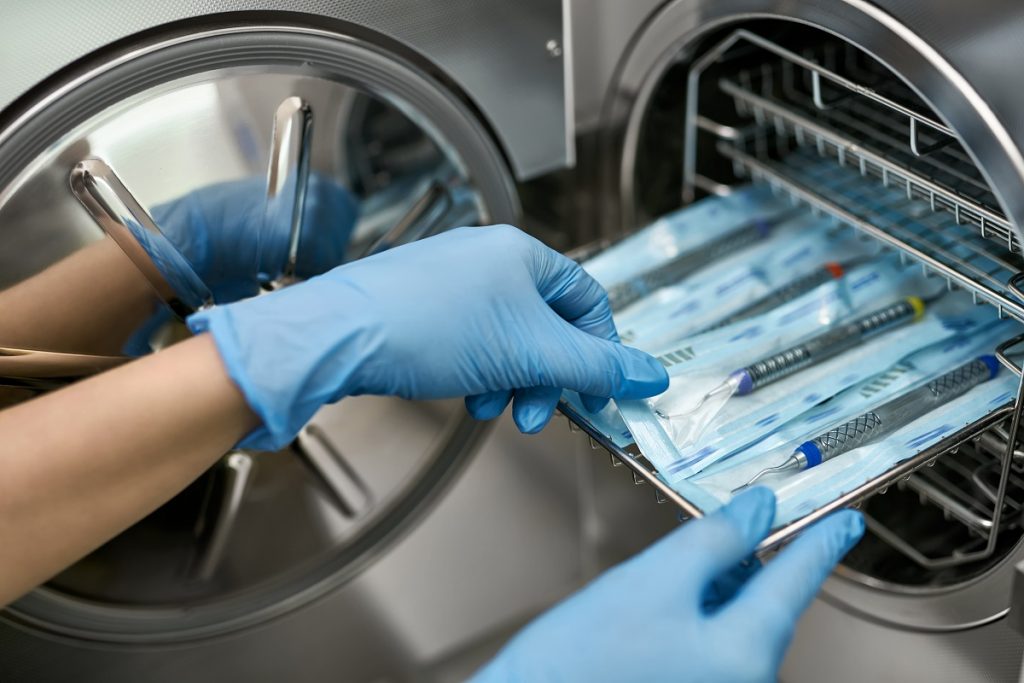Published on: January 6, 2021
The spread of infection during dental procedures is easy to control if proper care is taken to avoid its likelihood. Saliva, air droplets, blood, and instruments contaminated with secretions are some of the ways infection can spread through dental procedures.
Choosing a dentist can be difficult. There’s so many to choose from, and you want to make sure that you choose the right Dentist Vermont South for your needs.
It’s also possible that dental patients may unknowingly be carriers of infectious diseases. Dental healthcare professionals are at risk of spreading or contracting mumps, influenza, measles, hepatitis B, rubella, and varicella. Although patients are sometimes unable to prove they were infected at a dental clinic, it’s important to prioritize their health above everything else.

With the correct prevention practices, spreading infection during dental procedures can be avoided. Here’s a list of practices dental care professionals should follow to prevent infection:
- Good Hand Hygiene
Dental healthcare practitioners should be very thorough where hand hygiene is concerned. This helps prevent the spread of infection among patients. Use water and antimicrobial soap before and after nonsurgical procedures and routine dental examinations. You may also use an alcohol-based hand rub.
However, you should perform a surgical hand scrub before wearing sterile surgeons’ gloves if performing a surgical procedure. Always remember not to cut corners with an alcohol-based hand rub when your hands are soiled. When your hands have blood or body fluids, make sure you wash them thoroughly with soap and water.
- Respiratory Hygiene
Transmissible respiratory diseases are a hazard in dental clinics. They spread quickly through droplets or airborne routes. Sadly, patients who visit dental clinics and even the dental healthcare workers themselves may carry these infections without their knowledge. This puts everyone at risk.
Symptoms of respiratory infections include runny nose, coughing, congestion, and increased respiratory secretion. Prevent respiratory infection from spreading during dental procedures by doing the following:
- Avoid repeated use of single gloves.
- Put on a surgical mask and protective eyewear.
- Wear disposable gowns or laboratory coats.
- Decontaminate your surfaces.
- Wash your hands with soap and water before moving on to the next patient.
Dentists are more exposed to respiratory infections during dental procedures. However, with the right precautions, the risk can be minimized.
- Proper Use Of Personal Protective Equipment (PPE)
Dental healthcare practitioners can minimize the risk of infection with the appropriate use of protective clothing. PPE refers to the equipment that they can wear and is designed to protect them from exposure to or contact with infections. It effectively covers personal clothing and skin from being soiled by blood or saliva during dental procedures.
The following is a list of PPE necessary for dental healthcare practitioners:
- Protective eyewear
- Protective clothing (disposable or reusable jacket, gown, laboratory coat)
- Gloves
- Face masks
- Face shields
In situations where contact with blood, body fluids, mucus membranes, and non-intact skin are unavoidable, wear gloves and protective clothing. Make sure you put on eye, nose, and mouth protection where the likelihood of dental procedure generating splashes or sprays of blood and/or body fluids is high.
Remember, gloves can’t be reused, so do not wash them or wear them to perform dental procedures on a different patient. Wash your hands with soap and water as well after removing your gloves. Finally, remove your PPE before leaving work and dispose of it appropriately. Note that if proper hygiene is not followed, the next patient may be at risk.
- Safe Injection Practices
Dental healthcare practitioners should follow safe injection practices. This prevents transmission of infection from one patient to another. Infection can also spread from dental healthcare practitioners to patients during the preparation and administration of parenteral injections.
You can’t reinsert a used syringe into a medical vial or container to get more medication for a single patient only to use the same vial for another patient. Moreover, avoid preparing medications near contaminated supplies and/or equipment. You can ensure safe injection practices by:
- preparing injection in a clean area using aseptic technique;
- using single-dose vials for parenteral medications;
- avoiding using syringes or needles on more than one patient;
- not using the leftover content of single-use vials; and
- disposing of syringes and needles safely after every use.
- Sterilization And Disinfection
Cleaning, disinfecting, and sterilizing reusable equipment is a must for any dental establishment. Critical instruments used to penetrate soft tissue or bone pose the most risk of infection transmission and should be sterilized using heat. These include surgical instruments and periodontal scalers.
Semi-critical items include reusable dental impression trays, mouth mirrors, and amalgam condensers. They come in contact with mucus membranes and/or non-intact skin that is either chapped or abraded. While they have a lower risk of transmission, they should be sterilized using heat.
Non-critical patient care items pose the least risk of infection to patients and medical workers during dental procedures. These are blood pressure cuffs, face-bows, and radiograph heads. You can clean or disinfect them using an Environmental Protection Agency-registered hospital disinfectant.
Conclusion
Dental healthcare practitioners and patients can contract infections during dental procedures. It’s vital to take all the necessary measures like proper hand hygiene, sterilizing and disinfecting instruments, and practicing safe injection procedures, among other things. This will prevent both healthcare workers and patients from infections of all kinds.

